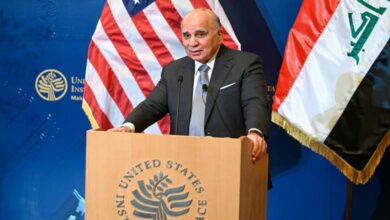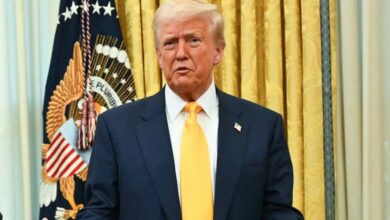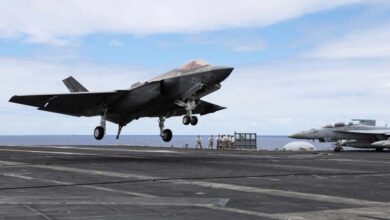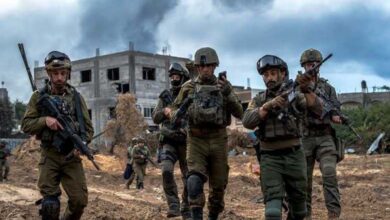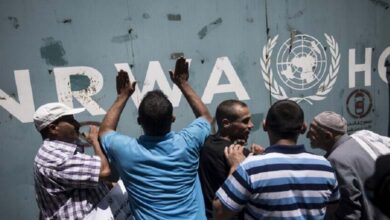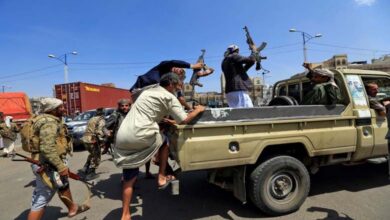U.S. Troop Reduction in Syria Puts SDF in Disarray

The withdrawal will weaken the Syrian Democratic Forces’ (SDF) ability to control vast territories in northeastern Syria, potentially leading to new conflicts with the new Syrian regime, Turkish forces, or even ISIS sleeper cells.
-
France Fights ISIS in Syria: Strikes on “Specific Targets”
-
The forest fires crisis in Syria threatens the fate of farmers
U.S. Special Envoy to Syria Tom Barak announced that the United States has begun to scale back its military presence in Syria as part of a plan to shut down all but one of its military bases in the country. This decision, coming amid the resurgence of ISIS threats in parts of the Syrian desert and northeastern regions, poses serious challenges for local actors—especially the Syrian Democratic Forces (SDF) and the interim government in Damascus.
In an interview with Turkish channel NTV on Monday evening, Barak stated that Washington has started a gradual drawdown under the framework of Operation Inherent Resolve, the international campaign launched years ago to defeat ISIS in Syria and Iraq. “We have gone from eight bases to five, then to three. We will likely maintain only one base in the next phase,” he said.
-
The European Union warns of the danger of ISIS in Syria and Iraq
-
ISIS Threatens al-Sharaa… Can the Group Still Operate in Syria?
While the move aligns with the broader policy direction of former President Donald Trump—favoring disengagement from foreign wars—its timing raises many questions, especially as ISIS increases attacks across Syria, threatening the relative stability gained after the group’s defeat.
This reduction in U.S. military presence is not entirely new; it extends Trump’s consistent stance that the U.S. should no longer bear the burden of endless foreign conflicts, particularly in the Middle East. Trump previously attempted a full withdrawal from Syria in 2019, but internal and external pressures prevented it, resulting in a minimal troop presence to support the SDF and monitor ISIS activity.
-
How ISIS Fighters in Northern Syria Could Benefit from Turkey’s Ambitions
-
ISIS Awakens in Syria: The Organization Awaits the Perfect Moment to Return to the Global Stage
Today, with significant on-the-ground changes and a U.S. administration continuing this isolationist approach, the withdrawal gains momentum—placing Washington’s local partners, chiefly the SDF, in a highly vulnerable position.
Field reports indicate a resurgence of ISIS operations, especially in the desert regions spanning Homs, Deir ez-Zor, and Raqqa. Dormant cells have resumed attacks on military convoys and positions held by both Syrian regime forces and the SDF. This renewed threat underscores that ISIS has not been completely defeated; instead, it has regrouped by taking advantage of global distraction and the reduced American presence.
-
Neutralization of several leaders of ISIS and Al-Qaeda organizations in Syria… Details
-
Betting on a “Breath of Life”… U.S. Officials Warn of ISIS’s Return in Syria
Without American protection, the SDF—Washington’s main ally in the fight against ISIS—faces increasing challenges. The withdrawal will undermine its control over vast parts of northeastern Syria, potentially triggering clashes with the new Syrian regime, Turkish forces, or even ISIS remnants.
The decision has caused deep concern among Syrian Kurds, who see it as abandonment at a critical moment. Turkey, which considers the SDF an offshoot of the outlawed PKK, has consistently expressed its intent to eliminate any Kurdish autonomous entity on its southern border. Since 2016, Ankara has launched multiple military operations against SDF positions, significantly shrinking their control over key border areas.
-
SDF Fights Syrian Army, Calls on Coalition to Combat ISIS
-
The Syrian Crisis: Damascus agrees to allow aid entry through Turkey
In this context, SDF commander Mazloum Abdi made a notable statement, suggesting a possible dialogue with Turkey to resolve ongoing issues peacefully. This shift in rhetoric reflects the SDF‘s awareness of its limited options amid waning U.S. support and its attempt to secure new political backing to preserve its self-rule project.
Meanwhile, Damascus faces a complex reality. With the ousting of former president Bashar al-Assad six months ago and the appointment of interim president Ahmad Al-Sharaa, hopes had risen for an end to the 14-year civil war. Yet, the return of security threats and escalating sectarian violence in some regions reveal that the country remains far from genuine stability.
-
United States kills ISIS leader in Syria responsible for terrorism in Europe and the Middle East
-
Syria’s Kurds Launch Offensive against ISIS Militants
The U.S. withdrawal could present the central government with an opportunity to reassert control over some areas. However, it also poses a significant risk—creating a power vacuum that could be exploited by armed groups or extremist factions, amid weak security institutions and political friction within the transitional authority.
This troop reduction reflects a major shift in U.S. strategy toward the Middle East and signals a decline in Washington’s regional priorities. Yet, it comes at a time of growing instability, complex alliances, and overlapping rivalries.
-
Maher al-Agal – ISIS leader in Syria killed in U.S. air strike
-
ISIS executes new operation in Syria – details
In this volatile landscape, Syria appears to be entering an uncertain phase. While it may offer a chance to reset power dynamics, it also carries significant dangers—especially without active regional and international engagement to prevent the American withdrawal from becoming a gateway to renewed chaos.


